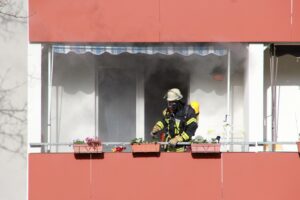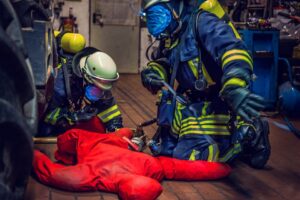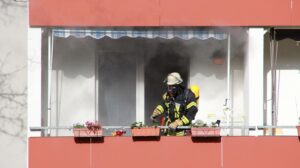From Lungs to Alveoli: A Journey Through the Respiratory System
The respiratory system, a complex and intricate network, serves one of the most vital functions of our body: gas exchange. Its primary objective is to deliver oxygen to our cells and remove carbon dioxide, a waste product of metabolism. This article aims to provide an expansive and detailed exploration of the respiratory system, focusing on the journey air takes from the lungs to the alveoli.
Overview of the Respiratory System
The human respiratory system consists of several key components: the nasal cavity, pharynx, larynx, trachea, bronchi, bronchioles, and alveoli. Each part plays a specific role in the process of respiration. The primary function of this system is to facilitate gas exchange, but it also contributes to vocalization, temperature regulation, and protection against pathogens.
Anatomy of the Respiratory System
Nasal Cavity
The journey of air begins in the nasal cavity, where it is filtered, warmed, and humidified. The nasal cavity is lined with ciliated mucosa and mucus-secreting cells which trap dust, pollutants, and pathogens. The air is then warmed to body temperature and humidified to optimize gas exchange.
Mucosal Defense Mechanisms: The cilia present in the nasal cavity move mucous upward toward the throat, where it can be swallowed or expelled. This action is a crucial defense mechanism against infection and irritants[^1].
Pharynx
After passing through the nasal cavity, air travels to the pharynx, a muscular tube that serves both respiratory and digestive functions. The pharynx can be divided into three regions: the nasopharynx, oropharynx, and laryngopharynx.
Role: The pharynx acts as a passageway leading to the larynx and esophagus, allowing for the separation of air from food and drink[^2].
Larynx
The larynx, commonly known as the voice box, is located just below the pharynx. It houses the vocal cords and is responsible for sound production. The larynx also plays a protective role, ensuring that food particles do not enter the trachea during swallowing. It accomplishes this via the epiglottis, a flap that covers the laryngeal opening.
Protection and Sound: The larynx is not only crucial for speech but also for the airway protection mechanism. The closure of the vocal cords prevents foreign substances from entering the trachea[^3].
Trachea
The trachea, or windpipe, extends from the larynx down to the bronchi. It is a rigid tube supported by C-shaped cartilaginous rings, which maintain its structure while allowing flexibility. The inner lining of the trachea contains cilia and goblet cells that continue to trap and expel foreign particles.
Structure and Function: Cilia in the trachea work in conjunction with mucous to trap contaminants, pushing them upward toward the throat and maintaining clean airways[^4].
Bronchi and Bronchioles
The trachea branches into the left and right primary bronchi, which enter the lungs. The bronchi further subdivide into secondary and tertiary bronchi, eventually leading to smaller bronchioles. The bronchi and bronchioles are lined with smooth muscle that regulates airflow through constriction and dilation.
Airflow Regulation: The bronchial tree is highly adaptable, controlling airflow based on the body’s needs, such as during exercise or rest[^5].
Alveoli
The bronchioles culminate in alveoli, tiny air sacs that are the primary site of gas exchange. Each alveolus is surrounded by a network of capillaries, allowing oxygen to diffuse into the bloodstream while carbon dioxide is expelled.
Structure of Alveoli: The walls of the alveoli are incredibly thin, facilitating efficient gas exchange. The surfactant, a substance that reduces surface tension, prevents alveolar collapse and plays a crucial role in maintaining their structure[^6].
The Process of Gas Exchange
Gas exchange occurs in the alveoli through a process called diffusion, where molecules move from an area of higher concentration to one of lower concentration. In the alveoli, oxygen concentrations are higher than in the blood, allowing oxygen to diffuse into the bloodstream. Conversely, carbon dioxide concentrations are higher in the blood than in the alveoli, promoting the diffusion of carbon dioxide out of the bloodstream.
Mechanisms of Breathing
Breathing occurs in two main phases: inhalation and exhalation.
Inhalation
Inhalation is an active process that involves the contraction of the diaphragm and intercostal muscles. The diaphragm moves downward, increasing the thoracic cavity’s volume and decreasing the pressure within the lungs, allowing air to flow in.
Diaphragm Functionality: The elasticity of the lungs also contributes to their ability to expand and contract during breathing, maintaining efficient gas exchange[^7].
Exhalation
Exhalation is generally a passive process during normal breathing. The diaphragm and intercostal muscles relax, leading to a decrease in thoracic cavity volume and an increase in lung pressure, causing air to be expelled.
Active Exhalation: During vigorous activity, exhalation can become an active process utilizing abdominal muscles to forcefully expel air more efficiently[^8].
Regulation of Breathing
The regulation of breathing is a complex interplay of neural and chemical mechanisms. The brain’s respiratory centers in the medulla oblongata and pons monitor carbon dioxide and oxygen levels in the blood.
Chemoreceptors
Chemoreceptors located in the carotid arteries and aorta detect changes in carbon dioxide and oxygen levels. When carbon dioxide levels rise, the chemoreceptors signal the respiratory center to increase the rate and depth of breathing.
Feedback Mechanisms: This feedback loop is essential for maintaining homeostasis and ensuring that our body receives adequate oxygen while expelling carbon dioxide[^9].
Respiratory Diseases and Disorders
The intricacies of the respiratory system also make it susceptible to various diseases and disorders.
Chronic Obstructive Pulmonary Disease (COPD)
COPD includes chronic bronchitis and emphysema, resulting in obstructed airflow and impaired gas exchange. Smoking is a major risk factor for developing COPD, as it leads to inflammation and damage in the airways.
Symptoms: Common symptoms include chronic cough, wheezing, shortness of breath, and increased mucus production[^10].
Asthma
Asthma is characterized by airway hyper-responsiveness, causing wheezing, shortness of breath, and coughing. Asthma attacks can be triggered by allergens, exercise, or respiratory infections.
Management: Effective management often involves the use of inhalers containing bronchodilators and anti-inflammatory medications[^11].
Pneumonia
Pneumonia is an infection of the lungs that can be caused by bacteria, viruses, or fungi. It leads to inflammation and fluid accumulation in the alveoli, disrupting gas exchange.
Symptoms: Symptoms typically include cough, fever, and difficulty breathing, requiring medical intervention for treatment[^12].
The Importance of Lung Health
Maintaining lung health is vital for overall well-being. The lifestyle choices individuals make can significantly impact respiratory function.
Exercise and Lung Function
Regular physical activity improves lung capacity and efficiency. Aerobic exercises, such as running, swimming, or cycling, enhance respiratory muscle strength and efficiency.
Physical Benefits: Exercising promotes better circulation and helps in the removal of mucus from the lungs, preventing respiratory illnesses[^13].
Smoking Cessation
Smoking dramatically increases the risk of developing chronic respiratory diseases. Quitting smoking leads to improved lung function over time and decreases the risk of lung cancer and COPD.
Support Systems: Various cessation programs and resources are available to assist individuals in their efforts to quit[^14].
Air Quality
Environmental factors significantly affect lung health. Pollutants, allergens, and indoor toxins can exacerbate asthma and other respiratory conditions. Awareness and mitigation of air quality issues are essential for promoting public health.
Preventive Measures: Measures such as using air purifiers, avoiding smoking indoors, and limiting exposure to allergens can help maintain a healthy environment[^15].
Conclusion
The respiratory system is an intricate network essential to sustaining life. Understanding its structure and function provides valuable insight into its significance in gas exchange and overall health. From the nasal cavity to the alveoli, each component plays a vital role in ensuring that our bodies receive the oxygen needed for survival while effectively expelling carbon dioxide.
As we move through life, the choices we make regarding our lifestyle, environment, and health care can significantly impact the well-being of this essential system. By prioritizing lung health and understanding the body’s respiratory processes, we can enhance our quality of life and contribute to overall health.


























Add Comment